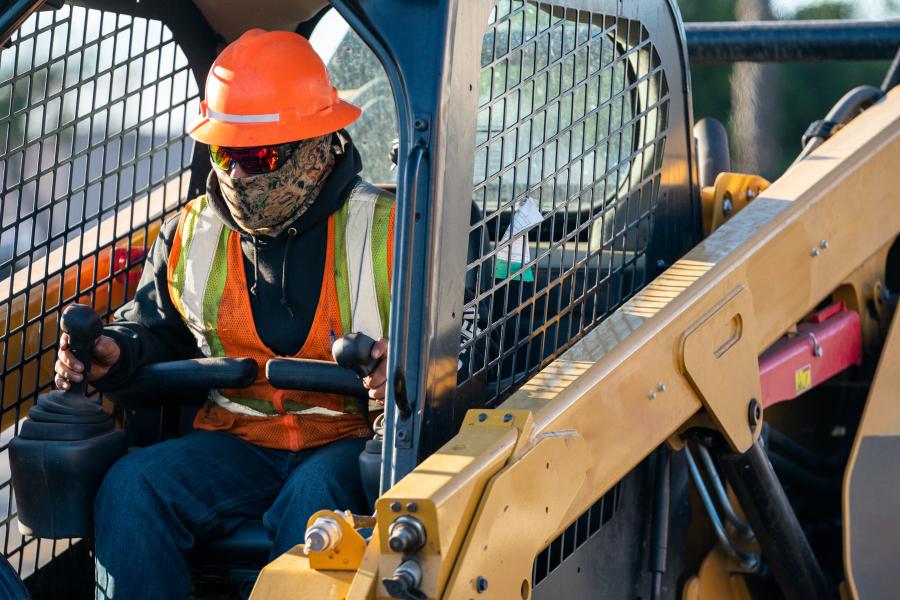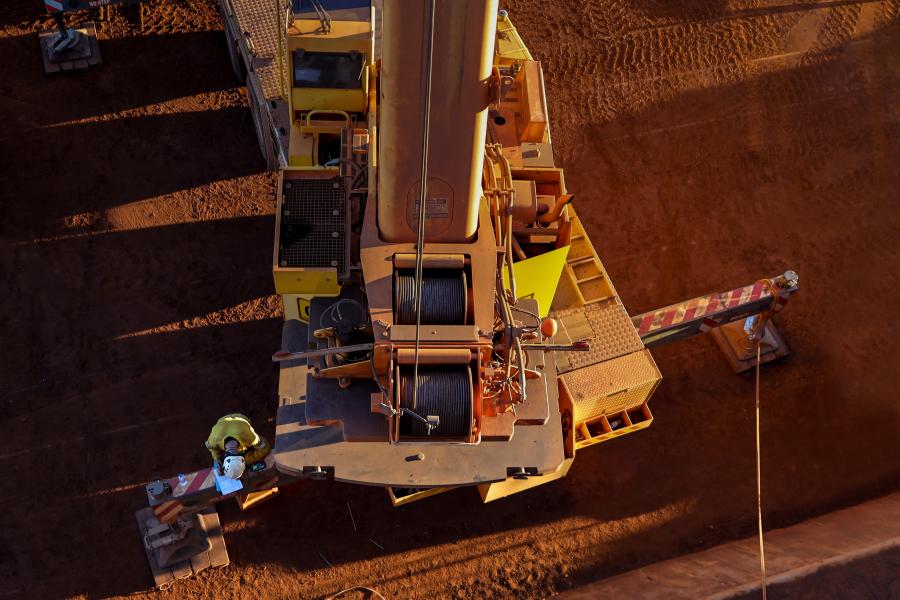The AGC believes it’s time for the United States to rethink its approach to educating and preparing workers for careers in construction.
The good news: The Biden administration's Inflation Reduction Act (IRA) is infusing the transportation and energy construction sectors with hundreds of billions of dollars. The not-so-good news: the lack of well-prepared workers is almost as great as the lack of workers, period. Combine the two and the result is a potentially insurmountable challenge for the transportation construction industry.
In early September, the AGC presented a pretty bleak picture of "the flaws in the nation's approach to preparing workers for construction careers."
The association conducted a survey with Autodesk to give a comprehensive update on members' experiences with staffing issues. AGC's 11th annual workforce-related survey boils it down to a major problem that goes beyond simply workforce supply and demand.
Yes, the industry needs more people. But, said Ken Simonson, chief economist, it's "time to rethink the way the nation educates and prepares workers."
The IRA's target is to electrify transportation and energy infrastructure that has historically run on fossil fuels. And while it will result in millions of new craft jobs well into the future, the challenge is to not only find craft workers, but skilled craftsmen and women.
More Than Just Warm Bodies
The Biden administration's critics preach of the need to staunch labor shortages, but also train workers to take on potentially new and different careers.
"The demand for these types of skilled laborers and workers will outstrip the supply," said Sanjay Patnaik, a director of the Brookings Institution.
The IRA's low-carbon transition base is "shifting our economy from fossil fuels to electrification," said Patnaik.
"That requires a trained workforce," he added, in an interview with Politico's energy news network.
While the climate legislation beefed up energy tax credits and rebates, what it didn't do was provide for training for clean energy and affiliated workers.
In a "missed opportunity," those programs were cut from the final bill, said Jason Walsh, executive director of labor and environmental organization BlueGreen Alliance.
"We won't be able to make and build and power our way to a clean energy economy," said Walsh.
We also won't be able to "create a workforce that looks like America and achieves our equity goals," he added.
That is, "unless we bring to bear intentional workforce strategies and the public investments to support them," Walsh said.
One California contractor whose company installs EV charging stations is hurting for electricians and blames it on insufficient fed workforce development.
"Demand is happening so fast, it's hard to find people that have actually installed charging stations before," said Ariel Fan of GreenWealth Energy.
But electrical contractors association NECA believes the aging construction workforce is setting the industry up for failure.
"Like a lot of other industries, we're facing this upcoming retirement boom, with the baby boomers starting to retire," Marco Giamberardino told Politico.
The senior vice president of government and public affairs added, "We're putting a lot into the recruiting side to get young people into the trades."
So are the feds, according to Politico. In fact, the White House is eyeing IRA tax credit bonuses as a contractor incentive to offer prevailing wages. The Biden administration also wants contractors to hire apprentices through project labor agreements with union organizations. And the DOE is requiring community benefit plans for grant and loan projects.
The benefit plans must be built around local workforce development and engagement with organized labor, reported Politico.
DOE is mitigating workforce shortage risks by encouraging investments in training and job quality, said Betony Jones, director, DOE office of energy jobs.
"We have a lot of untapped talent in this country — workers who are not participating in the labor market because they face barriers to employment," she said. "As we make jobs more accessible to women, veterans, formerly incarcerated workers and others, employers will have an easier time filling open positions."
The feds are in favor of unions' training and apprenticeship programs, which they say are key to expanding the American workforce.
"This administration will continue to work with unions, educational institutions and industry to train Americans," Robyn Patterson, White House spokesperson, told Politico. "But it's up to companies to provide the wages, benefits and job quality necessary to retain and attract the talent they need."
Industry: Fed Shares Burden
AGC believes efforts to not only attract craft workers but raise skills bar should be shared with the federal government.
"The biggest takeaway from this year's workforce survey is how much the nation is failing to prepare future workers for careers in fields like construction," said Simonson. "Too often, the applicants who are available lack even the basic qualifications needed to be employable."
The AGC's survey found that, in fact, few candidates have the basic skills needed to work in high-paying construction careers.
As a result, contractors are forced to find new ways to keep pace with demand and factors undermining efforts to build infrastructure and other projects.
The association survey highlights those significant shortcomings in the nation's approach to preparing entering construction workers. AGC reported that 85 percent of construction firms have open positions they are trying to fill, and 88 percent are having trouble filling at least some positions.
This is true particularly among the craft workforce that performs the bulk of onsite construction work, said the association.
"Largely similar results were reported by contractors that use exclusively union craft labor and by firms that operate as open-shop employers."
It didn't matter, either, if firms had $50 million or less in annual revenue or more than $500 million in revenue. Nor did the numbers differ by region.
The construction specialty, including highway and transportation projects, federal and heavy work, or utility infrastructure, made no difference.
Simonson noted one of the main reasons labor shortages are so severe is that most job candidates are not qualified to work in the industry. He considered the fact that 68 percent of firms report applicants lack the skills needed to work in construction "shocking."
Simonson maintains workforce shortages are worsening supply chain disruptions and driving up the cost of much-needed construction materials.
"While these shortages have recently shown signs of abating, 65 percent of firms report projects have been delayed because of supply challenges," he said.
Beyond experiencing supply bottlenecks, 61 percent of respondents said projects have been delayed because of labor shortages. Half said project owners canceled, postponed or scaled back jobs because of increasing costs. And, 22 percent of respondents said projects were impacted by extended completion deadlines or completion dates left up in the air.
The survey showed many construction firms are coping with or trying to overcome workforce shortages. In the past year, 81 percent have raised base pay rates; 44 percent provided incentives and bonuses; and 26 percent also improved benefits packages.
Firms are also getting more creative when it comes to recruiting workers. Sixty-three percent of survey respondents have added online strategies. Strategies include using social media or targeted digital advertising to better connect with younger applicants.
Contractors also are increasing training investments to address the fact that many candidates lack the basic hard and soft skills needed to be successful.
Forty-one percent of respondents reported they are boosting spending on training and professional development programs. Some 25 percent are enhancing their online and video training capabilities and 14 percent are using AR and VR technology to better train workers.
"A career opportunity in construction should mean an opportunity to work with advanced technology and perform safe, meaningful work," said Allison Scott of Autodesk. "As firms adopt more digital technologies and create stronger classroom and training pathways, we'll begin to see a new generation enter the industry.
Workers will be "equipped with the tools and skills to tackle construction's largest challenges," said Scott, director of customer experience & industry advocacy at Autodesk.
Light at the End of the Tunnel?
AGC said in virtually every community there are open construction positions that pay better than the average job and are vital to economic growth.
But, the association added, "too few schools offer classes in construction or even expose students to the opportunities that exist in the field."
Public officials need to significantly boost investments in programs that expose students to the opportunities and skills needed for careers in construction.
This, in turn, will put more students on a path to professional and financial success and address the needs of local employers.
"Boosting funding for programs that expose students to skills in careers like construction will signal that there are multiple paths to success in life, and one is not better than another," said Simonson.
AGC will continue its push for a narrowed education funding gap which they figure currently invests five times as much in encouraging a college education.
Simonson said that it will take years to rebuild the nation's career and technical education. AGC is willing to do its part, he added.
"Combined with our other efforts to attract and retain workers, we are confident that investing in construction education will help solve worker shortages in this sector." CEG
Today's top stories























